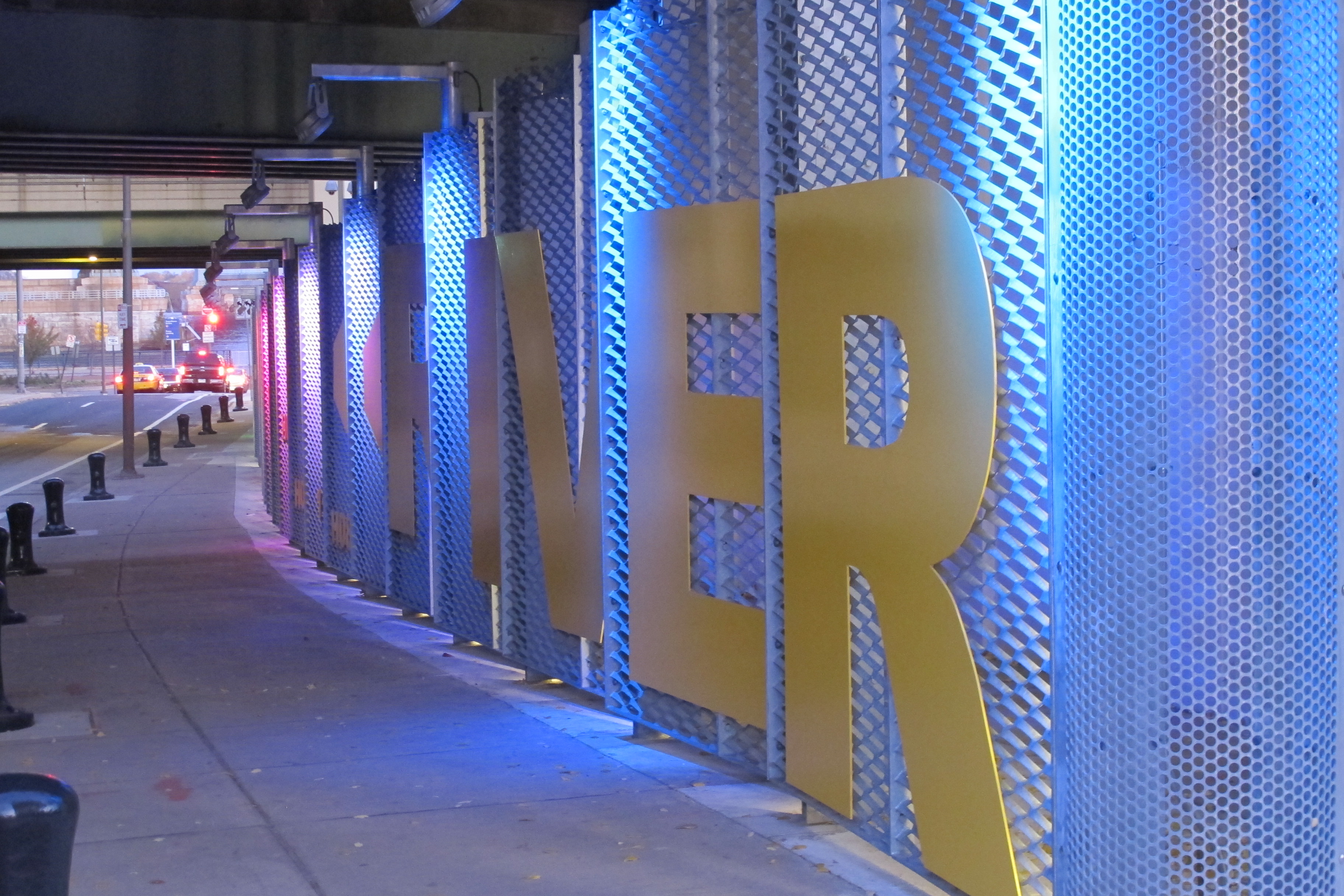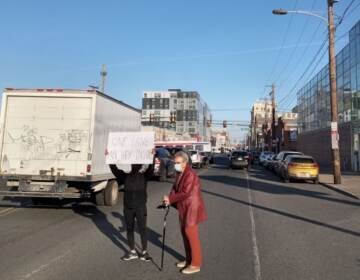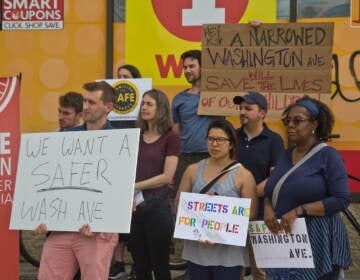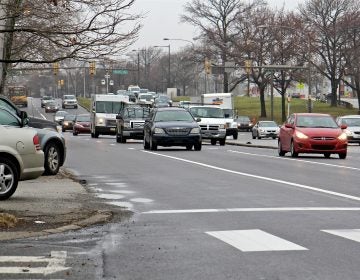Wishing on Philly 2012

2011 was a big year for Philadelphia’s planning ambitions. After years of work Philly got its first comprehensive plan in 50 years, a waterfront master plan, and a new green infrastructure plan that, along with our new zoning code, will guide the way our city changes for years to come. We saw early action projects jump off of the pages of plans onto our city’s streets. New parklets, parks, and plazas grace the city and construction booms at the city’s institutions and on the Parkway continued.
There is a lot I’d like to see happen in the New Year that builds on Philly’s planning progress to date. So here are eight wishes for 2012.
Complete the Connector
The area around Race Street and Delaware Avenue is a planning hot spot right now, what with the Race Street Pier and the new home for Live Arts/Philly Fringe. But the connector leading there from Old City is half done and you can tell. Connector streets are supposed to draw people from the city, under the I-95 viaduct, toward the river. The new Race Street Connector catches your eye, but it doesn’t quite work yet.
On the south side of Race Street, the art lighting and flood markers add visual interest along the sidewalk but the oversized signage is hard to read if you’re walking toward the river from Old City. The more visible north side of Race Street is blank, but that will change when the Delaware River Waterfront Corporation completes phase two next year. I hope the money turns up for phase two post haste.
Mobilize on I-95
Connector streets are only necessary because I-95 cuts the city off from its waterfront, and creates uninviting underpasses that are psychological barriers. I-95 will be rebuilt to the tune of billions in taxpayer money over the coming decades, and this year calls to urbanize I-95 resumed. The highway’s reconstruction is not so far along that a different path couldn’t be forged. Yes, I-95 carries traffic, but its current form may not be the best future bet we can make.
Can we plan our way out of the problems I-95 creates while answering our city and region’s mobility needs? I think it’s possible, but I’d like to hear serious, open conversation about rebuilding I-95 that involves policy makers, planners and the public at large. There’s too much at stake to miss this opportunity for serious design interventions that satisfy multiple bottom-lines.
Pedestrian space is the place
At a small scale, Philadelphia is already rethinking auto-centric spaces. It’s reclaiming roadway from cars and improving pedestrian and bicycle infrastructure. Thanks to grant funding from the Mayor’s Office of Transportation and Sustainability, four new pedestrian plazas will be built out of pieces of underused street next year, creating new spaces off South Street, Baltimore, Woodland, and Ogontz avenues. I hope to see bold design ideas take shape in these spaces that prove small interventions can be transformative.
Bank vacant land
Philadelphia is plagued by swaths of vacant land, and the Nutter administration has yet to come up with a clear approach to the problem. People are ready to see a change to the blighting influence of vacant properties in their neighborhoods, and free market solutions can only go so far.The Campaign to Take Back Vacant Land coalition wants to see Philadelphia create a municipal land bank to help create a transparent, strategic approach to the disposition of vacant property (debt-free and with clear title). For properties in desirable areas, revenue from the sales can subsidize land transfer to neighborhood-based community land trusts in other areas of the city to create affordable housing and public amenities.
Land bank legislation was introduced at the state and local levels this year, but it’s slow going. I want to see Mayor Nutter sign land banking into law in 2012. The land bank/community land trust model has worked well in other cities like Boston and Atlanta, and it is heartening to hear people in Philly talking seriously about trying it here.
Get the Reading Viaduct
The abandoned Reading Viaduct is a white elephant that meanders through Callowhill, blighting the landscape in its decrepitude. But the viaduct could be turned into a linear park, creating an amenity that connects neighborhoods with Center City, motivates positive growth, and builds green space. The whole concept is compelling to me. But before anything can happen up on the elevated rail bed, the city needs to negotiate with Reading International to gain control of the property. Now’s the time.
Survey History
Without a comprehensive survey of Philadelphia’s historic resources, our city will not have rational historic preservation priorities. Years ago the Preservation Alliance for Greater Philadelphia started the survey and preservation planning process, but in light of scant funding the effort is treading water. As a complement to the planning and zoning processes underway, shouldn’t Philly get back to understanding the baseline conditions of its built heritage? I think so. Let’s put survey teams on the street in 2012.
Seriously, Un-litter Us
I applaud the city’s campaign to get people to put trash in its place. But Philly can’t clean up its act if there’s nowhere to put litter. For this reason alone I am a fan of the BigBellys. Solve the microphobe-handle issue and I bet even more people would use the solar compactors. But we need more trashcans, BigBellys or regular ones, in more places. Trash gives the impression that we don’t care about our city’s appearance. We do. So, please let us be less trashy in the New Year.
Buy-in
Planning is about to get more personal. This year Philadelphia will create more district plans (Center City, University/Southwest, Lower Northeast, I’m lookin’ at you) as part of the comprehensive planning process and start zoning remapping. These efforts are where plans become real at the block level. These are rare opportunities to shape the course of development and neighborhood change and they deserve our care.
Philadelphians are deeply attached to their city. Let’s translate that attachment into action by participating in the neighborhood and district planning processes as well as paying close attention to zoning remapping. The outcomes matter, as does the transparency of the process. This commitment goes well beyond 2012, so let’s keep our eyes on the prize.
———
Want to share your wish for 2012? Email eots@planphilly.com and I’ll put your brilliant ideas together for a post in January.
WHYY is your source for fact-based, in-depth journalism and information. As a nonprofit organization, we rely on financial support from readers like you. Please give today.








